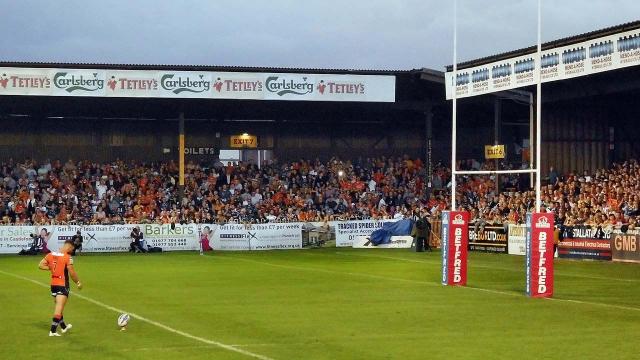As a third marquee player for Super League clubs is set it come into fruition, just how beneficial will it be for the game of Rugby League in the northern hemisphere as a whole?
First introduction
The marquee player rule was first introduced in 2015 by the Rugby Football League (RFL) as a way of giving Super League clubs the chance to attract the sport's best stars and keep the best English talent from going Down Under. Since then, one marquee player has increased to two, and, the new chief executive of the RFL, Robert Elstone, has declared his desire to increase this number to three.
For those in the Rugby League fraternity who do not understand what a marquee player is, it is a player that can be paid as much as he wants by a club, but only the first £150,000 of this player's contract counts on the salary cap.
Lack of takeup
The most pertinent argument against the introduction of a third marquee player is the fact that very few teams in the top flight make use of the two-player marquee rule that is already in place. Only Leeds (Trent Merrin and Konrad Hurrell), Wigan (George Williams) and Warrington (Blake Austin and Gareth Widdop from 2020) have made use of the ruling for 2018, while St Helens (Ben Barba) and Hull FC (Frank Pritchard) have done in the past.
That means that less than half of Super League clubs are currently taking or have taken advantage of the marquee player ruling, begging the question, does the rule really need to expand?
Disproportion of quality
As only five Super League clubs have made a marquee signing, the cream of the crop again tends to be with those at the top of the league. Wigan, Warrington, Leeds and St Helens are the so-called "Big Four" of the top flight in modern times and so they should be if they are the only sides - along with Hull FC who won back-to-back Challenge Cups in 2016 and 2017 - that can afford to pay for some of the NRL's best.
Only four teams have ever won the Super League Grand Final - Bradford, Leeds, St Helens, and Wigan - and this is unlikely to change in the near future if such sides are always able to trump the likes of Castleford in monetary terms, regardless of the ability of head coaches such as Daryl Powell.
Attracting stars
Super League has long been in the shadow of the NRL; with the expansion of the marquee rule, big-spending teams can try and prize some of the NRL's stars. Isn't seeing world-class players light up Super League what fans want? The fact that Warrington have been able to attract Blake Austin and Leeds Konrad Hurrell because of the marquee rule suggests that it is a good initiative and expanding it will see an increase in such talented players plying their trade in Super League rather than Down Under.
Bums on seats
It's no surprise that when internationally-renowned stars come to town attendances increase. In the 2013 Rugby League World Cup, Tonga and Scotland played out a thrilling group game in front of over 7,500 at Derwent Park in Workington - the biggest crowd this stadium had seen for decades.
Players such as Konrad Hurrell, Jason Taumalolo and Fuifui Moimoi put bums on seats and the more of this kind of calibre player Super League can attract the better it will be for the game as a whole.
Improve Super League
There is no doubt that when other players are playing alongside stars, they raise their game. Look at the impact Gareth Ellis had while he was at Hull FC. Whilst not a marquee signing in name - Ellis signed for Hull in 2013, two years before the introduction of the marquee rule - Ellis was definitely one in nature. His teammate at Hull Danny Washbrook described him as "such an important leader on the field,", and it was clear that when Ellis was in the team, Hull were a far better side.
It's this kind of player that Super League has struggled to attract in the past. But, with an added incentive to do so - only £150,000 of their wage will be counted on the salary cap - there is no reason why the sport in this country cannot improve its product on the field.




